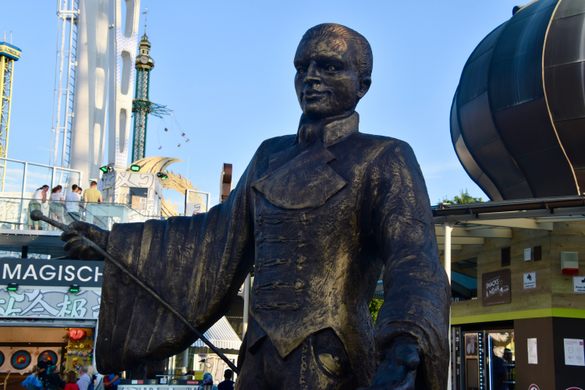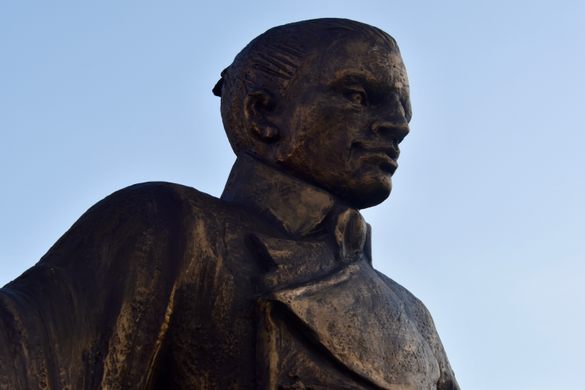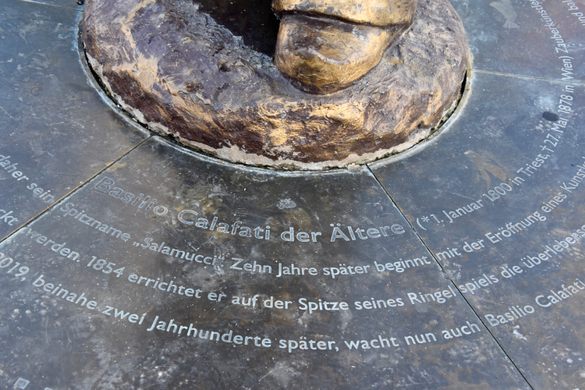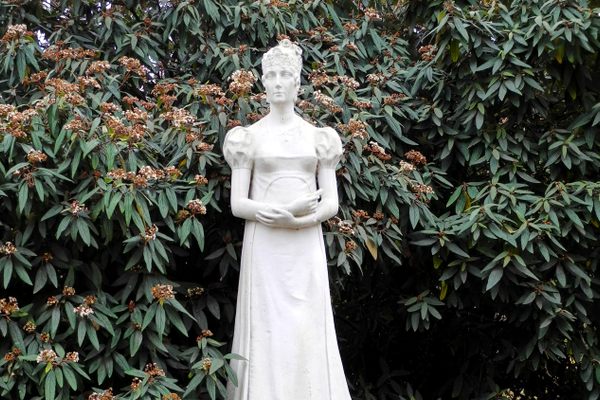AO Edited
Statue of Basilio Calafati
One of the most notable figures in the Wurstelprater’s history is often assumed to be a fictional character.
The Prater Park of Vienna, best known for its Ferris wheel, has been open to the public since 1766, undergoing many renovations over the years and evolving into the unique amusement park it is today. One of its symbols is a nine-meter-tall statue of a stereotypical Qing Chinese man called Calafati, complete with a Fu Manchu mustache.
In the busy plaza (which happens to be named Calafatiplatz) also stands the bronze statue of Basilio Calafati, a man clad in a ringmaster costume. Although he is assumed by many tourists and locals alike to be a fictional character like the “Great Chinese,” it’s actually a monument dedicated to the real Calafati, one of the most notable figures in the Prater’s history.
In 1820, a 20-year-old Basilio Calafati started performing at the Prater as a magician under the stage name of Salamucci. Twenty years later, Calafati earned a license to operate the merry-go-round; in 1848, he replaced its two horses with steam locomotives that he named Pallas and Peking. He also removed the carousel’s roof and installed the “Great Chinese” statue there, which stood until it was destroyed during the Battle of Vienna in 1945. The current “Calafati” is a replica unveiled in 1967. In addition to the renovation of the carousel, Basilio Calafati is known to have created several new attractions for the Wurstelprater, as well as a restaurant and a billiard hall.
Calafati died in 1878 and was buried at the Holy Trinity Greek Orthodox Church, where his tombstone can be found today.















Follow us on Twitter to get the latest on the world's hidden wonders.
Like us on Facebook to get the latest on the world's hidden wonders.
Follow us on Twitter Like us on Facebook